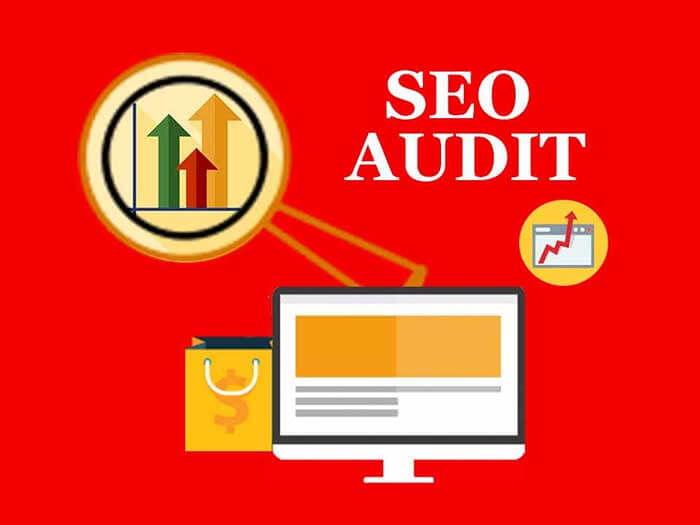SEARCH ENGINE OPTIMIZATION Vs. SEM: Comprehending the Trick Distinctions
SEO, which stands for Browse Engine Optimization, concentrates on enhancing a site's visibility and natural ranking on search engine results web pages. On the various other hand, SEM, or Search Engine Advertising and marketing, includes paid marketing to boost an internet site's visibility on search engines. Comprehending the crucial distinctions in between Search engine optimization and SEM is crucial for services looking to enhance their on-line existence and drive web traffic to their web sites.

Interpretation of SEO
SEARCH ENGINE OPTIMIZATION, or Seo, describes the technique of maximizing internet sites to boost their presence and positions on internet search engine results web pages (SERPs) It includes numerous strategies and strategies aimed at increasing organic, or non-paid, web traffic to a web site. The utmost goal of SEO is to boost an internet site's on-line existence and attract even more targeted site visitors.
One of the crucial facets of search engine optimization is keyword optimization (http://business.punxsutawneyspirit.com/punxsutawneyspirit/news/article/marketersmedia-2023-12-3-linkdaddy-announces-agency-backlink-local-business-directory-listings-service). This involves performing comprehensive research study to identify relevant keyword phrases that individuals are likely to browse for when searching for info or products connected to a particular website. By incorporating these keywords purposefully right into the site's content, meta tags, and Links, SEO aims to boost the site's importance and ranking for those certain search terms
Another vital aspect in SEO is on-page optimization. This includes optimizing numerous aspects on a site, such as title tags, headings, photos, and interior web links, to make them more search engine-friendly (seo). By ensuring that these aspects are properly structured and pertinent to the website's web content, SEO aids internet search engine understand the context and importance of the site
In addition, SEO likewise includes off-page optimization methods, such as web link structure. This involves obtaining high-grade back links from various other reliable sites, which suggests to browse engines that the site is authoritative and reliable. By building a strong network of back links, search engine optimization boosts a web site's trustworthiness and increases its chances of placing greater in search outcomes.
Definition of SEM
SEM, or Internet Search Engine Advertising, is an advertising and marketing technique that entails advertising sites and enhancing their presence via paid advertising on online search engine results web pages (SERPs) Unlike search engine optimization, which concentrates on maximizing websites to improve organic search rankings, SEM utilizes paid advertising to drive traffic to a web site.
Among the crucial parts of SEM is pay-per-click (PAY PER CLICK) advertising and marketing. With pay per click, advertisers quote on key words that relate to their target audience. When a user look for those keywords, the advertisements show up on top or side of the search results page. Marketers only pay when a user clicks on their advertisement, therefore the term "pay-per-click."

SEM additionally consists of other forms of paid advertising, such as display screen advertisements, remarketing advertisements, and buying ads. Display advertisements are banners or aesthetic ads that appear on websites within the Google Present Network. Remarketing advertisements target individuals who have actually formerly seen an internet site, offering them ads as they search other sites. Buying advertisements, on the other hand, promote certain items and show pertinent info, such as cost and availability.
Purposes of SEO and SEM
The purposes of both search engine optimization (SEARCH ENGINE OPTIMIZATION) and online search engine marketing (SEM) focus on increasing an internet site's visibility and driving targeted website traffic. The methods and approaches employed by each vary dramatically.
The main goal of search engine optimization is to boost a site's natural search position on search engine results pages (SERPs) This is attained by optimizing numerous elements on the site, such as web content, meta tags, and site framework, to make it much more relevant and attractive to look engines. By doing so, SEO aims to bring in even more organic website traffic from users actively browsing for relevant keyword phrases or topics.
On the other hand, SEM focuses on raising a website's exposure via paid advertising and marketing on search engines. The primary objective of SEM is to drive targeted traffic to a site by bidding on keyword phrases and showing ads in search engine results. This method enables businesses to reach a broader audience rapidly and efficiently.

Key Components of SEO
To efficiently carry out search engine optimization, it is crucial to comprehend the crucial parts that add to improving a site's natural search position. These elements can be generally categorized right into off-page variables and on-page elements.
On-page variables refer to the components that are directly existing on a website and can be maximized for better search engine exposure. This includes the web site's web content, keyword phrase use, meta tags, URL structure, web page titles, and headings. By enhancing these elements, online search engine can better recognize the relevance and context of the internet site's content, leading to greater rankings.
Off-page variables, on the other hand, concentrate on exterior signals that influence a site's authority and trustworthiness. This consists of backlinks from other trustworthy web sites, social media sites signals, and online mentions (https://illinoisinsights.com/press/linkdaddy-announces-agency-backlink-local-business-directory-listings-service/102516). The more pertinent and high-quality backlinks a web site has, the far better its opportunities of rating greater in search engine results pages
Furthermore, customer experience is a vital component of search engine optimization. link building. Internet search engine prioritize websites that offer a positive user experience, including fast packing times, mobile-friendliness, and simple navigation
Key Components of SEM
In comparison to search engine optimization, SEM encompasses an unique collection of vital elements that concentrate on paid marketing and driving instant exposure in internet search engine outcomes. These parts include search engine marketing, additionally referred to as pay-per-click (PPC) marketing, keyword study, advertisement production, and project monitoring.
Online search engine advertising is a critical part of SEM. It entails bidding process on keywords pertinent to your organization and creating message or screen advertisements that will certainly show up in internet search engine results when those key words are searched. With online search engine advertising, you can target details demographics, places, and even time of day to reach your wanted audience.
Keyword study is an additional crucial part of SEM. It includes identifying the keyword phrases that your target market is using to look for items or services similar to yours. By conducting detailed keyword research, you can maximize your ads and ensure they are revealed to the best individuals at the correct time.
Advertisement production is the process of establishing influential and compelling advertisements that will certainly entice customers to click them. Well-crafted advertisements have a strong call-to-action, pertinent messaging, and a clear value recommendation.
Last but not least, campaign management involves monitoring and enhancing your SEM projects to guarantee they are performing successfully. This consists of tracking metrics such as click-through prices, conversion rates, and return on financial investment (ROI) to make data-driven choices and achieve the best results.
Final Thought
Finally, search engine optimization and SEM are 2 unique strategies in digital advertising. SEO focuses on enhancing internet sites to improve organic search positions, while SEM entails paid advertising to boost presence on search engine results pages. Both approaches have their very own objectives and essential elements that add to their efficiency. Understanding the differences between SEO and SEM is crucial for companies to establish a thorough internet marketing method.
SEARCH ENGINE OPTIMIZATION, which stands for Browse Engine Optimization, focuses on enhancing a site's exposure and organic ranking on search engine results pages. On the various other hand, SEM, or Look Engine Advertising and marketing, entails paid marketing to boost helpful site a web site's exposure on search engines (seo).SEO, or Search Engine Optimization, refers to the practice of maximizing internet sites to boost their presence and positions on search engine results web pages (SERPs)The major objective of Search engine optimization is to enhance a site's natural search position on search engine results web pages (SERPs) SEO focuses on maximizing web sites to enhance natural search positions, while SEM includes paid marketing to increase visibility on search engine results pages